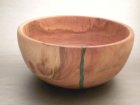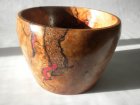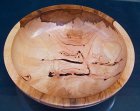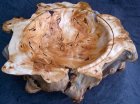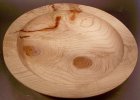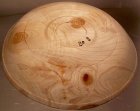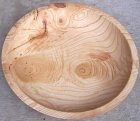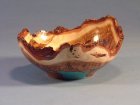Roger Wiegand
Beta Tester
So I have had a couple of occasions now where I notice a developing crack well into turning a once-turned NE bowl in green wood. I've has actually good success in stabilizing the crack by soaking in some thin CA glue; the pieces have moved and warped but not continued to crack.
I know the right answer is to throw it in the firewood pile for the oven, but sometimes the bowls look pretty nice and the cracks aren't very obvious, so I keep them around for a while before sacrificing them to the pizza gods.
The most glaring problem comes at finishing, where the area around where the CA has been applied takes the finish differently than the rest of the bowl, leaving a very obvious signature. Especially in softer wood, like the box elder I've been turning lately, the CA soaks deep into the end grain and can't be removed by any sensible amount of sanding. I've also tried using CA to stabilize punky areas in spalting wood, with the same issues.
Is there a way around this without soaking the whole piece in glue? Or is, as I suspect, the answer to pitch the piece when the crack is first noticed and not invest any more time and effort in it?
I know the right answer is to throw it in the firewood pile for the oven, but sometimes the bowls look pretty nice and the cracks aren't very obvious, so I keep them around for a while before sacrificing them to the pizza gods.
The most glaring problem comes at finishing, where the area around where the CA has been applied takes the finish differently than the rest of the bowl, leaving a very obvious signature. Especially in softer wood, like the box elder I've been turning lately, the CA soaks deep into the end grain and can't be removed by any sensible amount of sanding. I've also tried using CA to stabilize punky areas in spalting wood, with the same issues.
Is there a way around this without soaking the whole piece in glue? Or is, as I suspect, the answer to pitch the piece when the crack is first noticed and not invest any more time and effort in it?


